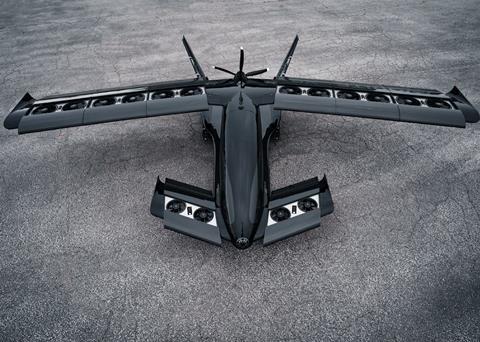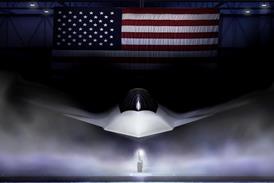Though much of the emerging vertical take-off and landing (VTOL) sector is focused on fully electric vehicles, Canadian developer Horizon Aircraft is taking a different tack with its proposed Cavorite X7.
Co-founder and chief executive Brandon Robinson tells FlightGlobal during the Paris air show on 19 June that the Cavorite X7 is designed to “fly 98% of the mission like normal” with a hybrid-electric propulsion package that will burn jet fuel during forward flight.

“There is only enough battery power on board to enable the vertical take-off, and the rest of the time it is a normal airplane burning sustainable aviation fuel or kerosene jet fuel, which is 20 times more energy-dense than even the best batteries,” he says.
Robinson, a retired fighter pilot, notes that the conceptual aircraft could be converted to a fully electric propulsion system if battery technology matures enough to power short-haul operations.
The Cavorite X7 is a step forward from Horizon’s first iteration, the X5, which was designed to carry one pilot and four passengers. The eventual production aircraft will be capable of short-take off and landing, needing only “a couple hundred feet” of space, Robinson says. Featuring a fan-in-wing design, it will cruise at 200kt (370km/h), with a range of 500nm (926km) and a 1,500lb (680kg) payload capacity. The craft is designed to recharge its batteries mid-flight, allowing for quick turnaround times.
The company envisions that the Cavorite X7 initially will be used for special missions such as hauling cargo, medivac operations and fire-fighting applications, such as guiding water bombers to drop locations. Eventually, operations could be expanded to regional passenger transport.
Ontario-based Horizon is currently conducting wind-tunnel testing on a half-scale prototype of the Cavorite X7. It plans to test a full-scale prototype next year and achieve type certification in 2026 or 2027.


























